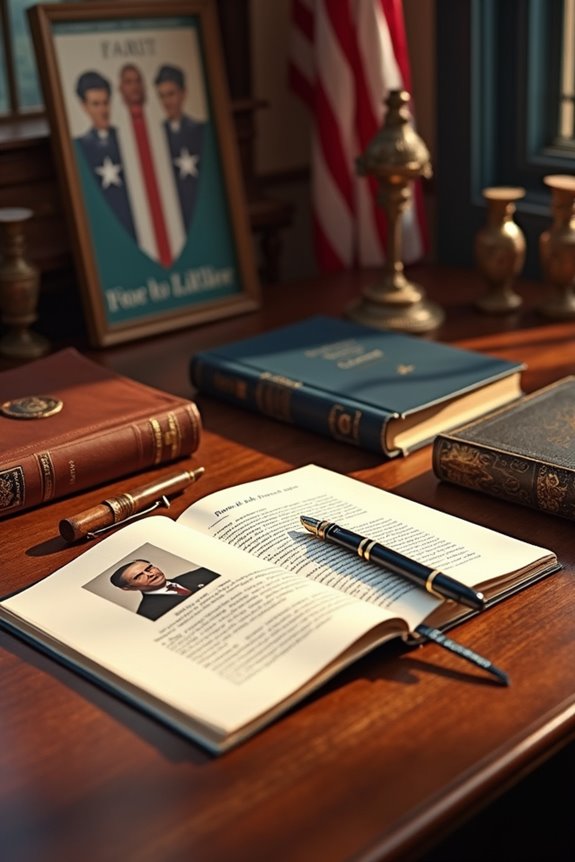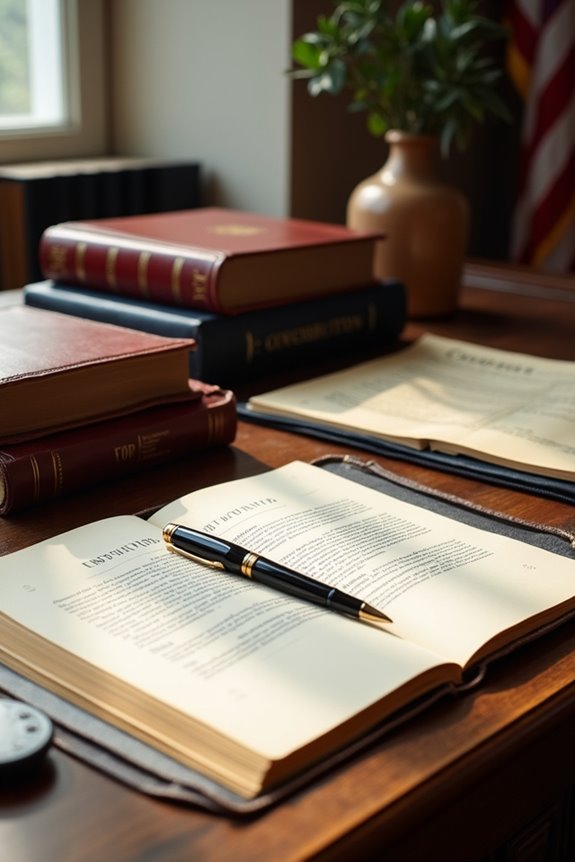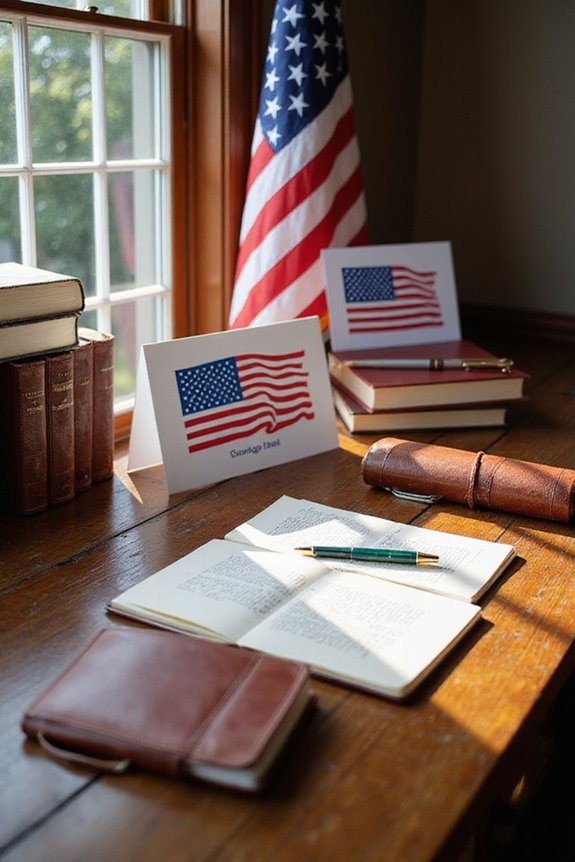When considering the best political posters and banners, we focus on several key elements:
- Visual Styles: Clear, centralized imagery enhances viewer attention.
- Color Techniques: Contrasting colors create hierarchy, while limited palettes maintain focus.
- Typography: Bold and simple fonts guarantee legibility.
- Imagery: National symbols resonate emotionally and foster connection.
- Engagement: Concise messaging, QR codes, and endorsements boost credibility.
Continue with us to explore innovations that elevate political poster design.
Key Takeaways
- Effective political posters utilize simplicity and clear messaging to avoid clutter and maintain focus on key elements.
- High contrast in color combinations enhances readability and directs attention to important information, making it effective from a distance.
- Maximalist and brutalist typography styles are popular for their ability to create strong visual impact and ensure legibility.
- Incorporating national imagery and cultural symbols fosters a sense of identity and connection with the audience, enhancing engagement.
- Utilizing QR codes on banners encourages online interaction and sharing, catering to modern voter preferences.
Visual Styles in Political Posters
Visual styles in political posters play a crucial role in conveying messages effectively. We often see posters emphasizing simplicity, avoiding clutter to maintain viewer focus. Centralized visuals, like candidate portraits and symbolic imagery, attract immediate attention and create emotional resonance.
Key elements include:
- Logical Flow: Guiding the viewer’s eyes through clear, hierarchical message areas.
- Rule of Thirds: Organizing the layout for visual balance and emphasis.
- Negative Space: Using white space to enhance readability and highlight important elements.
- Cultural Symbols: Incorporating historical imagery to communicate identity and align candidates with voter values. Additionally, using high-definition graphics can further engage viewers by making the poster visually striking.
These strategies guarantee that complex messages are conveyed quickly and effectively, fostering a deeper connection with viewers.
Color and Contrast Techniques
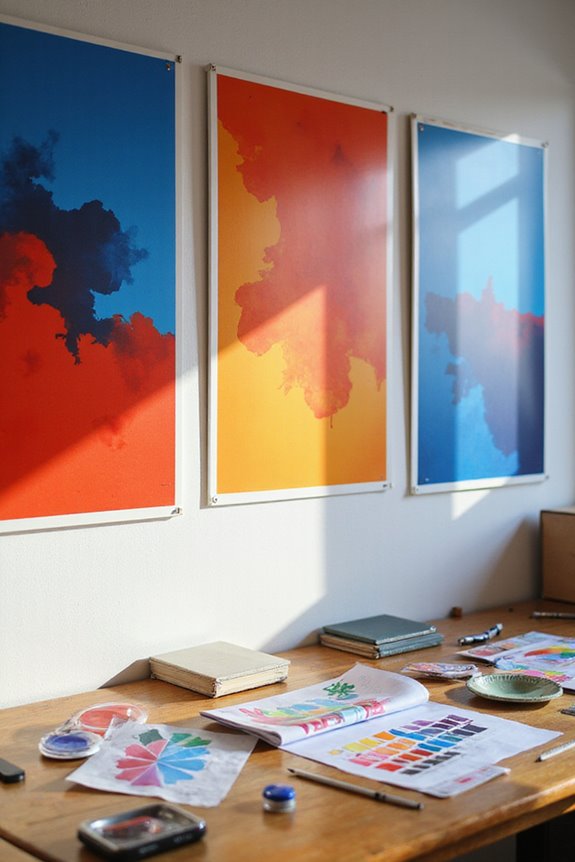
Color and contrast techniques are essential in creating effective political posters that grab attention and communicate messages. By understanding color psychology, we can evoke emotional responses that enhance the impact of our campaigns. Here are some key aspects to take into account:
- Contrasting colors create visual hierarchy, directing attention to focal elements, like a candidate’s image.
- Warm colors (red, orange) promote energy and motivation, while cool colors (blue, green) convey stability and trust. Additionally, visibility and impact can be significantly improved with the strategic use of color contrast.
- High contrast between text and background guarantees readability, especially from a distance. Furthermore, the primary organ for sight is the brain, which processes the visual information collected by the eyes.
- Using a limited color palette avoids overwhelming viewers, maintaining focus on the message.
- Testing designs in various lighting conditions guarantees clarity and effective communication.
Typography Trends in Political Design
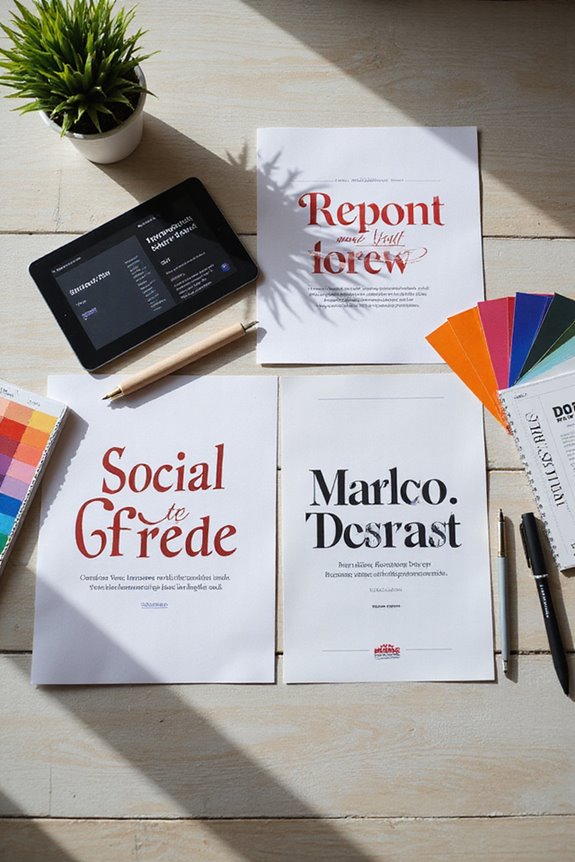
Typography plays a pivotal role in the effectiveness of political design, complementing the color and contrast strategies we discussed earlier. In political posters, we see various typography trends that enhance communication.
- Maximalist Typography utilizes bold, oversized fonts for immediate visual impact, emphasizing typographic hierarchy. This trend aligns with bold, adventurous designs making statements that resonate with voters, often reflecting societal values in its presentation.
- Brutalist Typography favors clear, simple letterforms, ensuring legibility and direct messaging.
- Nuanced Nouveau Revival blends historic elegance with modern readability, appealing to traditionalist voters.
- Experimental Typography challenges norms with playful letterforms, fostering engagement among younger demographics.
- Dynamic Typography adapts across formats, enhancing viewer interaction and emotional connection.
These styles use expressive lettering to convey distinct political identities, making them essential in today’s fast-paced, media-driven environment.
Iconography and Imagery in Political Banners
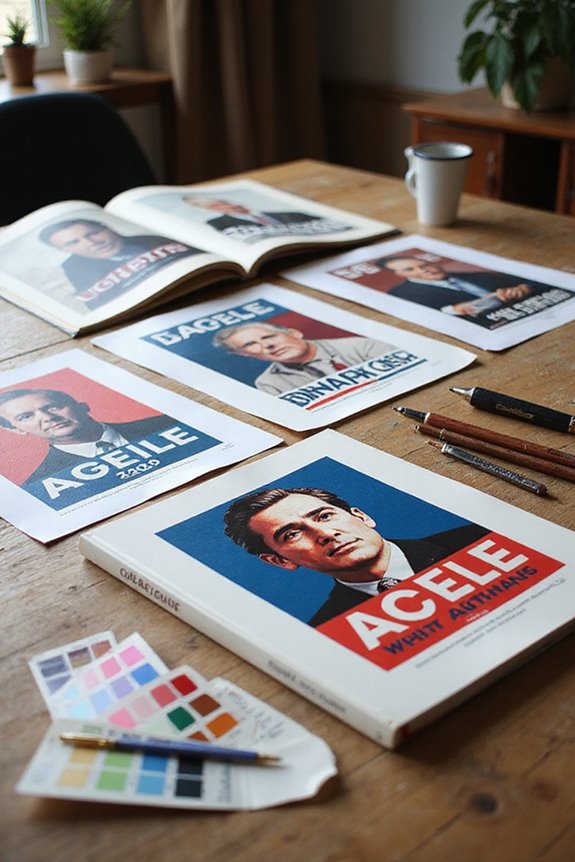
Iconography and imagery in political banners serve as powerful tools for conveying messages and evoking emotional responses. They use symbolic representation effectively, employing universal symbols like doves for peace and fists for resistance.
Key aspects include:
- National Imagery: Flags and landmarks reinforce a sense of identity and patriotism. Copyright years: 2010-2025 highlight the importance of respecting the creators of such imagery.
- Iconic Figures: Silhouettes and portraits humanize campaigns, fostering connections with voters.
- Color Psychology: Colors like red and blue communicate ideological positions, impacting viewer perception.
- Dynamic Composition: Centralized imagery and strategic layout guide focus and enhance visual energy.
Audience Engagement Strategies
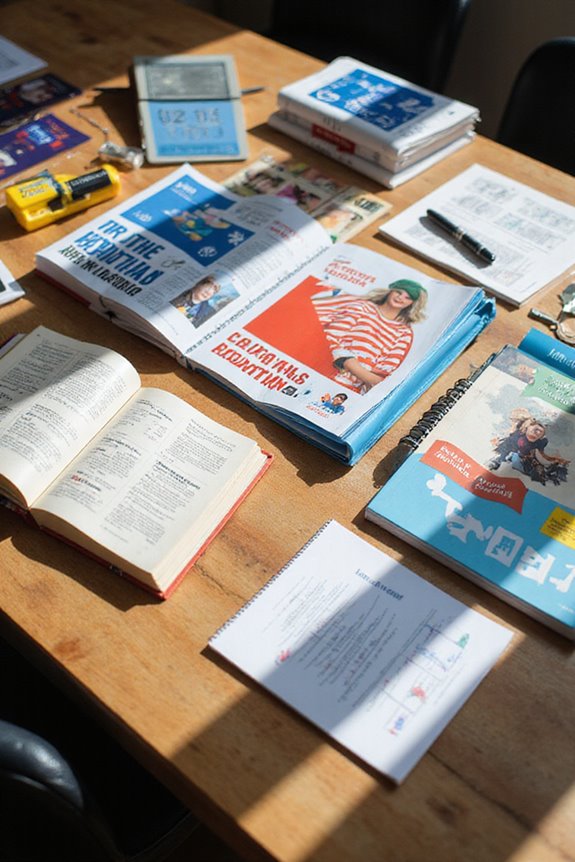
Engaging the audience effectively is crucial for the success of political campaigns. To capture our target demographics, we should strategically place posters in high-traffic areas. This maximizes exposure and aligns messaging with contextually relevant content, enhancing engagement metrics.
Here are some effective strategies:
- Use clear and concise language to convey essential points.
- Limit text on posters to prevent information overload.
- Incorporate QR codes for easy sharing and online engagement.
- Rotate themes and formats to cater to varied voter preferences.
- Highlight endorsements prominently to boost credibility and trust, as endorsements from respected figures enhance candidate’s appeal. Additionally, utilizing eye-catching designs can significantly attract attention and encourage discussion among viewers.
Innovations in Political Poster Design
How can we effectively capture the attention of voters through innovative political poster design?
- Fluid Dynamics: We can embrace melting, fluid forms that replace rigid layouts. This approach creates dynamic shapes, enhancing visual appeal. Soft gradients and glass-like transparency contribute to a soothing aesthetic.
- Mixed Media: By incorporating scrapbooking aesthetics, we can combine physical textures with digital elements. This tactile approach enhances relatability, allowing complex storytelling through collage-like designs.
- AI-Enhanced Realism: Utilizing AI tools helps us achieve photorealistic imagery, blurring lines between photography and digital art. This adds emotional depth to our messages.
- Bold Contrast: High-saturation colors and neon glows attract attention, especially in crowded environments. Color choices reflect identity and urgency, enhancing visibility in both physical and digital formats. Additionally, incorporating high-quality printing can further amplify the visual impact of the design, ensuring messages are clearly communicated.
Frequently Asked Questions
How Can I Create My Own Political Poster?
Creating our own political poster starts with clear message clarity and impactful visuals. We should focus on poster design elements that resonate with our audience, ensuring every detail conveys our campaign’s core message effectively.
What Materials Are Best for Printing Political Banners?
We’d love to suggest that vinyl banners and fabric posters are perfect for political messages—if you want them to fade faster than our attention spans! With exceptional print quality and weather resistance, they’ll endure the storm!
Are There Legal Restrictions on Political Poster Designs?
Yes, there’re legal restrictions on political poster designs. We must consider design regulations and copyright issues to guarantee compliance and avoid potential legal troubles. It’s essential to understand these aspects before creating any posters.
How Do Different Cultural Contexts Influence Political Poster Effectiveness?
Different cultural contexts deeply influence political poster effectiveness. We’ve seen how cultural symbolism and visual rhetoric shape audience reactions, making familiar motifs resonate emotionally while avoiding misunderstandings that could undermine the intended message.
What Historical Events Shaped Modern Political Poster Design?
We’ve seen how World War I’s propaganda techniques, coupled with civil rights movements, influenced graphic design in political posters. These historical events shaped visual storytelling, merging art with advocacy to resonate deeply with diverse audiences.

